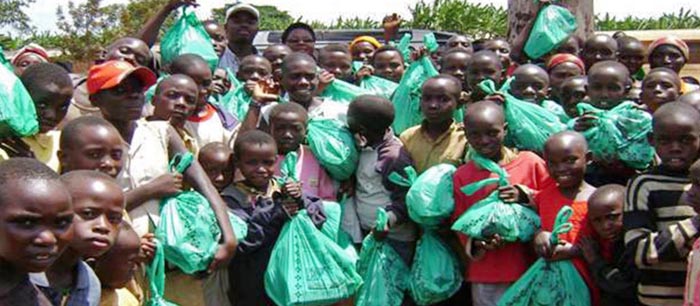East African member states and other countries inCentral East Africa are facing alarming levels of food insecurity and related problems. NGO’s in collaboration with some ministries are helping in tackling the issue.-By J.Berchmans Siboniyo
Food is becoming scarce in many parts of East Africa.Aid agencies estimate thatabout20 million people are facing acute food insecurity in Easternand CentralAfrica. The worst affected areas include South Sudan, Central African Republic, Somalia and northern Kenya. In Kenya, an estimated 1.3 million people require support to protect them from food insecurity – 300,000 of whom are either at ‘crisis’ or ‘emergency’ levels, according to the Kenya Food Security Steering Group. They report that with below-average household incomes, price increases for maize will result in reduced purchasing power for poor, urban consumers as well as poor households in the pastoral and marginal agricultural areas.The Famine Early Warning System Networks(FEWS NET), an USAID agency, mentioned in July that the competition for limited rangeland resources between now and September increases the risk of conflict. Furthermore, in pastoral areas, the poor livestock body conditions make the livestock more susceptible to disease.
In Uganda, the World Food Program (WFP) reports that some 252,810 people, many of them in Karamoja, are either in ‘emergency’ or ‘crisis’ level. FEWS NET noted that the September/October harvest is expected to only be 20 to 30 percent of average. “There will be minimal green consumption this year”, the report states. “Households will not see the usual post-harvest increase in food access. Despite adequate availability of staple food on the market at stable prices, households’ constrained income means they have limited ability to purchase food. Eastern parts of the region are likely to remain in Crisis through December.” Climate change, the scarcityandthe smallness of the available lands and internal displacements of people due to social conflicts and wars are the primarycauses of the food insecurity in the region.
Food insecurity in Burundi
In Burundi, the World Food Program (WFP) reports that at least 682,000 people are either in ‘crisis’ or ‘emergency’ level of food insecurity. In the northeast, food production levels were 40-60 percent below average this season, as a result of poor rainfall.
The NGO Catholic Relief Services (CRS)investigated food security and nutritionin Burundi and found the population in Ruyigi and Cankuzo provinces to be most affected by malnutrition. Through the Tubaramure project (Kirundi for ‘let’s make them independent’), the NGO makes people aware of the deficiencies in their diet. Alongside the training, the NGO provides them with selected seeds. “After they have seeds, we teach themmodern farming techniques with different kinds of crops resistantto climate change”, says SalvatorNkurunziza, responsible for the Agriculture and Food Security Unit in CRS. “If the harvest is good, we teach them how to save it”, he continues. “We want to start the hermetic storage technology already available in Kenya and in Rwanda.” Without adequate and timely action, the situation in many places in East African countries willdeteriorate. To prevent famine in the worst-hit countries,the UN started distributing emergency livelihood kits.




















 IWACU Open Data
IWACU Open Data

